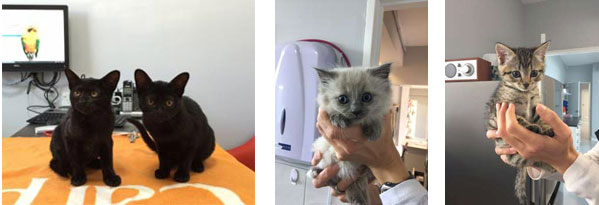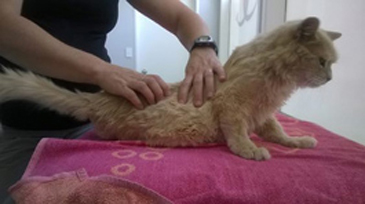
Ruby The Rabbit
It happens almost overnight – your cute, well-mannered little rabbit reaches puberty. Suddenly, your baby has become a sort of unmanageable. And has seemingly forgotten why you’ve provided a litterbox.
Below is a picture of little Ruby (the chocolate bunny) – madly hormonal and frantically nest building (a 24 hour exhausting marathon) in the first picture. Our Vet Kathrin saw Ruby for her spay surgery last week.
Spaying or neutering your rabbit offers many benefits. A fixed rabbit is able to live a longer, healthier life as the risk of cancer is greatly reduced. Unofficial statistics indicate that between 50% to 80% of all unspayed females will be affected by uterine cancer by the age of 5 years. Uterine cancer is the main cause of death in intact female rabbits! Spaying removes the uterus and prevents this health risk. And in most cases a desexed rabbit becomes calmer and easier to manage, yet they don’t lose their charmingly adorable nature. They are also easier to litter train and have less of an urge to spray. Also, spayed or neutered bunnies are often easier to bond because of their calmer demeanor. And of course, you will not end up with a litter of baby buns….
So, when is the best time to spay or neuter your rabbit?
When mal rabbits are between 3 and 5 months old, they are old enough to be neutered. Female rabbits are generally old enough to be spayed between 4 and 6 months. Desexing surgeries are done on an outpatient basis. Surgery can be as safe on rabbits as on any animal if the vet and clinic staffs are experienced with safe rabbit anesthesia and surgery techniques. At Ellerslie Vet Clinic & Cattery we use for example supraglottic airway devices for inhalation anesthesia to make anesthesia as safe and atraumatic as possible.
Ruby is back home and is enjoying a great time with her owners … and … Binky – her flat mate, who had to cope with Ruby’s temperamental ways in the past, too.



Pingback: quality social links
Pingback: DG Casino เว็บตรง
Pingback: พรมดักฝุ่นรถยนต์
Pingback: Buy pounds of weed online
Pingback: ติดเน็ตบ้าน
Pingback: find more
Pingback: รับทำ SEO
Pingback: ป้ายโฆษณา
Pingback: 툰코주소
Pingback: n777คาสิโน
Pingback: เว็บปั้มไลค์
Pingback: relx pod
Pingback: ซอฟท์สตาร์ทเอบีบี
Pingback: KA GAMING
Pingback: qiuqiu99 bandar
Pingback: ทัวร์หลีเป๊ะ
Pingback: เรือไปหลีเป๊ะ
Pingback: alpha88 pc
Pingback: agen togel
Pingback: sudoku
Pingback: bonanza178
Pingback: เว็บพนันออนไลน์
Pingback: 마추자벳
Pingback: ข่าวกีฬา
Pingback: สล็อต ฝากถอน true wallet เว็บตรง 888pg
Pingback: snuscore
Pingback: ทินเนอร์ AAA
Pingback: 토렌트 다운
Pingback: judi slot terpercaya
Pingback: toto makau
Pingback: 20165 zip code
Pingback: สล็อต pg เว็บตรง แตกหนัก
Pingback: peacenewspaper.net
Pingback: house for sale pattaya
Pingback: villas in phuket thailand with private pool
Pingback: เรียนภาษาญี่ปุ่น
Pingback: nagaqq terbaik
Pingback: situs togel online
Pingback: paito HK
Pingback: Vape carts USA
Pingback: แทงมวย 2LOTVIP ดียังไง
Pingback: ข่าวรถใหม่
Pingback: muha carts
Pingback: โซล่าเซลล์
Pingback: เช่าเรือสปีดโบ๊ท,เช่าสปีดโบ๊ท เจ้าพระยา,เรือเช่าเหมาลํา เจ้าพระยา
Pingback: dubbele gordijnen
Pingback: meja365